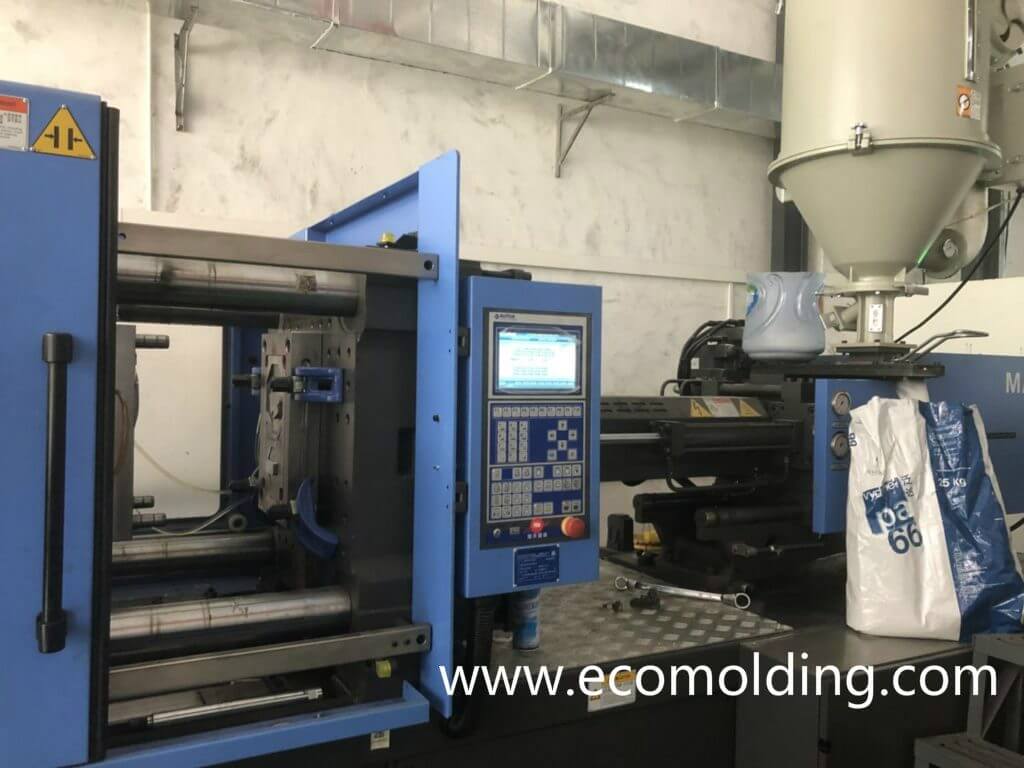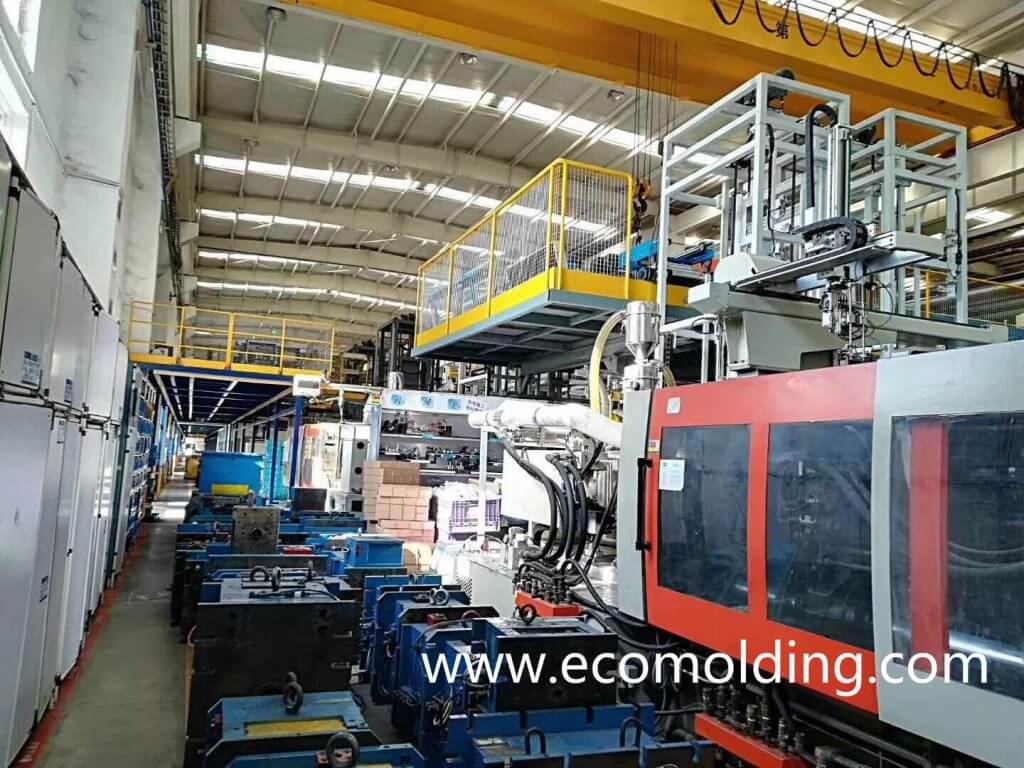Changing material or color in the injection molding process certainly deserves in-depth discussion. A quick color or material change cannot only save time, but also drastically bring down the production cost.

1)Color change – a same material
In principle, when injection molding factory change the color of a same material, change from light to dark is usually easier than that from opaque to transparent.
The regular color change procedure is described as below:
- Shut the feed inlet located in the lower part of the feed hopper;
- Perform several empty shots, until the previous material is cleared from the barrel;
- Feed the new material into the hopper;
- Open the feed inlet, and pull the screw back and forth for a dozen times until changeover is completed.
When changing from an opaque material to a transparent material, the nozzle needs to be removed to clear the residue; if necessary, the screw needs to be pulled out for thorough cleaning to make sure that there is no residue hiding in the corners.
2)Color change – a different material
Concerning switch between different materials, the material change steps are performed on basis of the viscosity difference between the materials, as well as barrel temperature control.
Thermoplastics tend to adhere to metal surface at a high temperature; and the situation is the opposite when the temperature is low.
The change of materials can take advantage of this feature – make the previous material in the barrel adhere to barrel surface, and then help the high-viscosity remover material clean it with the involvement of cold screw. At this point, the screw temperature needs to be low enough, so that the previous material will not adhere to it, thus easy for purge. Therefore, the remover material needs to possess a high melt viscosity, such as high-density PE or PS.
Keep the following considerations in mind when switching materials:
- Before changeover is done, the barrel temperature needs to be lower than the actual molding temperature; for example, when changing from the low molding temperature material A to the high molding temperature material B, the purging temperature of material B should be 10℃ – 20℃ lower than its molding temperature; and when changing from the high molding temperature material B to the low molding temperature material A, the purging temperature of material A should be 10℃ – 20℃ lower than its molding temperature.
- Reduce screw rotation speed and screw backpressure, to prevent material temperature rise caused by frictional heat;
- Try to prevent the material (molten) to be replaced from adhering to the screw;
- Apply short screw travel to flush the material for several times, to achieve the best effect for material change;
- If there are scars or gaps on the barrel inner surface, or the screw head, outer surface or groove, the molten material may be stuck at such locations, thus making it hard for material change.
3)Practical operation of material change
During the plastic injection molding process, changing material or color happens a lot. If sufficient basic knowledge of material change is not equipped, waste of time and money may probably be caused to the manufacturer. To respond to the challenges posed by changeover, the Germany-made CORATEX purging agent has been introduced to clear the residues left in the screw, the nozzle and the mold (especially ideal for cleaning of hot runner molds), which is very helpful for reducing the time consumed by changeover.
Material switch operation for PC
From PC to ABS
(1) Shoot all remaining PC out from the barrel;
(2) Within the molding temperature range of PC, use high-density PE to clear the residual PC from the barrel;
(3) Bring barrel temperature down below 220℃, and use ABS to clear the high-density PE, then changeover is completed.
From PC to POM
(1) Shoot all remaining PC out from the barrel;
(2) Within the molding temperature range of PC, use high-density PE to clear the residual PC from the barrel;
(3) Bring barrel temperature down below 190℃ and use POM to clear the high-density PE, then changeover is completed.
From PC to PMMA
(1) Shoot all remaining PC out from the barrel;
(2) Within the molding temperature range of PC, use high-density PE to clear the residual PC from the barrel;
(3) Bring barrel temperature down to 240℃, use non-dried (moist is not removed) PMMA to clear the high-density PE and then clear it with dried PUMA. The changeover is then completed.
From PC to PP
(1) Shoot all remaining PC out from the barrel;
(2) Within the molding temperature range of PC, use PP to clear the residual PC;
(3) Bring barrel temperature down to 200℃, and use HIPS to clear the high-density PE, then changeover is completed.
Material change operation for ABS
From ABS to PC
(1)Shoot all remaining ABS out from the barrel;
(2) Within the molding temperature range of ABS, use high-density PE to clear the residual ABS from the barrel;
(3) Raise barrel temperature to 290℃, and use PC to clear the PE, then changeover is completed.
From ABS to POM
(1) Shoot all remaining ABS out from the barrel;
(2) Within the molding temperature range of ABS, use PS to clear the residual ABS from the barrel;
(3) Bring barrel temperature down to 190℃ and use POM to clear the PS, then changeover is completed.
From ABS to PMMA
(1) Shoot all remaining ABS out from the barrel;
(2) Within the molding temperature range of ABS, use PS to clear the residual ABS from the barrel;
(3) Keep barrel temperature at 240℃, use non-dried (moist is not removed) PMMA to clear the PS and then clear it with dried PMMA. The changeover is then completed.
Material switch operation for POM
From POM to PC
(1) Shoot all remaining POM out from the barrel;
(2) Within the molding temperature range of POM, use PE to clear the residual POM from the barrel;
(3) Raise barrel temperature to 290℃ and use PC to clear the POM, then changeover is completed.
Material switch operation for PP
From PP to PC
(1) Shoot all remaining PP out from the barrel;
(2) Raise barrel temperature to 290℃ and use PC to clear the PP, then changeover is completed.
From PP to POM
(1) Shoot all remaining PP out from the barrel;
(2) Keep barrel temperature at 190℃ and use POM to clear the PP, then changeover is completed.
From PP to ABS
(1) Shoot all remaining PP out from the barrel;
(2) Keep barrel temperature at 240℃ and use ABS to clear the PP, then changeover is completed.
From PP to PMMA
(1) Shoot all remaining PP out from the barrel;
(2) Keep barrel temperature at 240℃, use non-dried PMMA to clear the residual PP from the barrel and then clear it with dried PMMA. The changeover is then completed.
From PP to HIPS
(1) Shoot all remaining PP out from the barrel;
(2) Keep barrel temperature at 240℃ and use HIPS to clear the PP, then changeover is completed.
